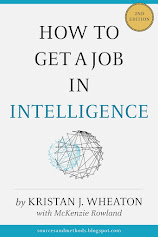Happy Thanksgiving!
In light of the impending holiday season, we are taking a moment (or a blog post, as it is) to indulge in quiet reverie for all that is edible and delicious.
And yes. You read correctly. SAM is publishing TS material!
Don't worry. We aren't Wikileaks. Just humble listmakers bringing you the top ten most unexpected yet necessary ingredients for holiday (and everyday) cooking.

Everyone has that one ingredient; the one thing they add to almost every dish they prepare. Mine is stone ground mustard. Inglehoffer is my brand of choice. Stone ground mustard makes just about anything better, from salad dressing to my heart-attack-Mac (fantastic baked macaroni and cheese recipe below). But mustard's capabilities do not stop there! Who knew there was a chic side to mustard? For an explanation of that statement, see the tarragon and carrot tart recipe.
Honey is the number one ingredient in salad dressing. Homemade salad dressing is one of those things that may seem intimidating, but any person with some olive oil and a spoon should be able to whip up in under 60 seconds. I guarantee that you already have the ingredients at home. See simple salad dressing recipe below.
Nutmeg is not an uncommon ingredient in pie. But it is an uncommon ingredient in fetuccine Alfredo In fact, nutmeg is the top secret ingredient in all those delicious Italian cream sauces we know and love. Whether it's Gruyere, Parmesan, white wine or just plain cream sauce, it isn't complete without a dash of nutmeg. (Homemade Alfredo sauce is another seemingly intimidating recipe that is actually quite easy and perfected in under five minutes; see Alfredo sauce recipe below).
Okay. I know what you're thinking. Vodka is the not-so-top-secret ingredient in martinis. But there is a certain method to the madness of putting vodka in your homemade holiday pie crusts. The vodka gives the crust added moisture; it makes it easier to work with. But alcohol quickly evaporates in the high temperatures of the oven leaving your pie crust alcohol-free.
This trick comes all the way from the ancient Maya. Put chocolate in your chili and chili in your chocolate. Being a history-of-cacao fanatic, ancient cacao remedies can be traced all the way back to before the Spanish conquest. The famous Mexican mole (moh-lay) sauce is based off the timeless mixture of chili and chocolate. Long story short, next time you make a pot of chili, throw in a Hershey bar or some cocoa powder.
This brings me to chili. Not chili the soup, but chili the pepper. Chili powder is the secret to that winter cup of hot cocoa. Some rich chocolate, a cinnamon stick and a dash of chili powder and that is what they call Mexican Hot Chocolate. Beyond hot cocoa, chili is the key ingredient in all things chocolate; sauces, truffles, fudge, etc. The darker the chocolate, the more chili appropriate.
Beyond answering the question, "when is beer not a good addition to food," I make the case that beer has a very special place in two particular culinary endeavors. The first is one I have already mentioned. Chili. The single best thing for a slow-cooking pot of chili is a bottle of beer (I personally like to use an amber). The second suggestion is a bit more surprising. Bread. Yep, there is such a thing as beer bread. The steam smells of hops and it's dense with a slightly sweet finish. The best part (other than the fact that it contains beer) is that it is extremely easy to make. Why? No kneading required. Also, no yeast! The beer contains the yeast the bread needs to rise, so the beer bread recipe is basically just beer and flour. It is also very flexible. Experiment with different kinds of beer (nothing too hoppy or it doesn't rise well), add herbs (rosemary is great) or add jalapeños for those who like a little spice.
This one might seem obvious, but is worth noting anyway. Cabernet (even cheap Cabernet - any red wine, really) makes a red sauce. It also makes sauteed mushrooms. So it really makes a sauteed mushroom red sauce! Add half a cup of white wine to your cream sauces and half a cup of red to your marinaras just when you turn off the stove about 10 minutes before serving, so the alcohol doesn't completely cook out of the sauce.
Sumac is the most top secret of all the secret ingredients listed in this post. It is so secret, you will never find it in your local grocery store, but it is well worth the hunt. Typical of Turkish or Greek food, it is a staple spice in Middle Eastern cooking, especially Lebanese cuisine. Dark red or dark purple in color, sumac has a dry, tannic almost burnt flavor, pairing well with paprika or cayenne. Use it in a rub for chicken, sprinkled over a simple yogurt or tzatziki sauce or with anything paired with feta cheese for an authentic Mediterranean flavor.
The final secret ingredient is no stranger to the American palette. Cinnamon is quite common, especially sprinkled on top of a cappuccino or mixed in the filling of a warm apple pie. As it turns out, the secret to putting cinnamon in coffee is when you put the cinnamon in the coffee. Just after pouring your fresh grounds into the coffee filter, sprinkle cinnamon over the top before brewing. This will accomplish two things: 1. Give your coffee a subtle yet unmistakable hint of cinnamon and 2. Make your house or apartment smell amazing!
Now, as promised, here are the recipes:
Baked Mac-and-Cheese (Heart-attack-Mac)
1 cup cottage cheese
1/2 cup sour cream
2 cups sharp cheddar cheese (plus 1/2 cup more for topping)
Elbow noodle pasta
1 tablespoon stone ground mustard
Black pepper
Salt
Blend cottage cheese, sour cream, mustard and salt together in blender until smooth. Cook pasta and strain. While pasta is still hot, pour cheese mixture over top, adding cheddar cheese and tossing until thoroughly coated. Place mixture in baking pan, top with the extra 1/2 cup of cheddar cheese and black pepper. Bake in oven at 350 for about 20 - 30 minutes, or until edges just start to brown. Remove from oven and let sit for approx. 20 minutes before serving.
Simple Salad Dressing
Mix the following ingredients together in no particular order (can be made in advance):
4 tablespoons extra virgin olive oil (quality olive oil is key)
2 tablespoons balsamic vinegar
The juice from half a lemon
2 teaspoons stone ground mustard
2 teaspoons honey
Fresh ground black pepper
Pinch of salt
2 teaspoons dried thyme
For sweet salads containing spinach, mushrooms, pears, Gorgonzola cheese or walnuts, increase honey and mustard, decrease lemon and vinegar. For tangier salads containing chicken, dried cranberries, green apples, pecans or feta, de-emphasize the honey and mustard.
Homemade Alfredo Sauce
1 cup heavy cream
1 stick unsalted butter, cut into pieces
1 cup finely grated Parmesan cheese
1 teaspoon nutmeg
2 teaspoons paprika or cayenne
2 cloves garlic, minced
5 - 7 large brown mushrooms, sauteed (with Cabernet or sherry)
1/4 cup finely chopped parsley
Freshly ground black pepper
Salt
Sautee mushrooms and garlic together. Set aside. Heat cream over medium in saucepan on stove until steaming, but do not bring to a boil. Turn off the heat, but leave the saucepan on the stove. Add butter and stir until melted. Add cheese and stir until melted. Throw in spices, parsley and mushrooms, stir lightly and pour over warm, fresh pasta.


















